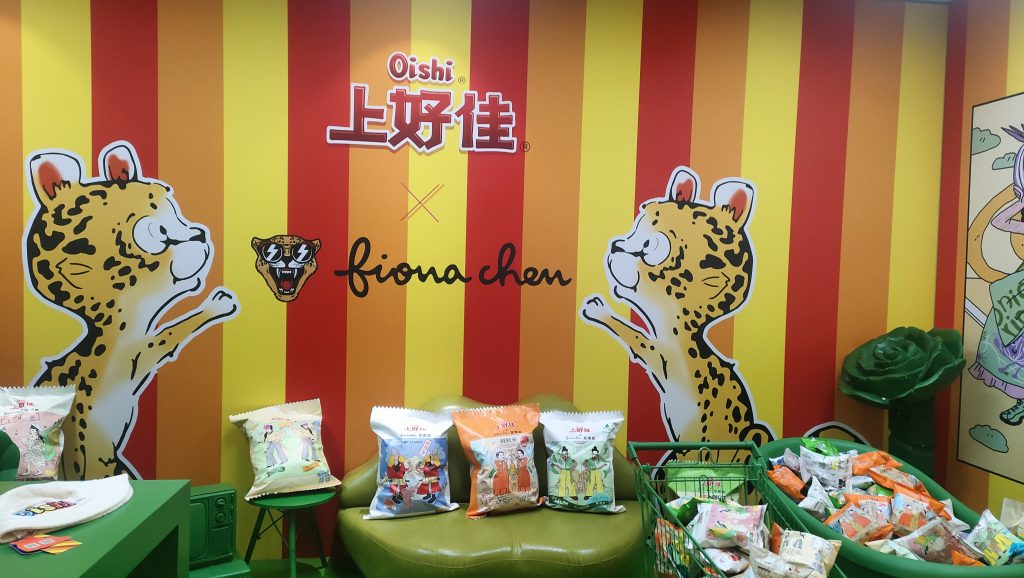A HOMEGROWN brand is thriving in China’s highly competitive snack industry, maintaining its position as the fourth largest in terms of sales through consistent innovation and a dedication to be attuned to consumer demands.
From its origins as the premier gawgaw (cornstarch) producer in 1966, Liwayway Marketing Corp. ventured into the snacks industry as Oishi in 1974, finally carving a piece of the snacking pie through its popular Prawn Crackers and Kerei Yummy Flakes under the able hands of brothers Carlos and Manuel Chan.
What most people probably don’t know is the close connection between Oishi and Bench, as the clothing brand’s CEO Ben Chan is their brother. Their parents were from Jinjiang in Fujian Province and immigrated to the Philippines early on.
Carlos Chan started exploring the potential of China, particularly in Pudong, Shanghai where he first set up shop in 1993. Being one of the pioneers in the snacks and chip industry in the Middle Kingdom, Oishi skyrocketed to the top and dominated the field.
After Shanghai, Oishi quickly expanded to other areas in China such as Nanhui, Harbin, Kunming, Jiangxi, Hubei, Xinjiang, Shandong, Qinhuangdao, Hengshui, and GLG Tianjin.
Walter Angsanto, Oishi-Shanghai Plant executive vice president, said their chairman, Carlos Tan, was a visionary because he immediately saw the market potential of China during his initial visits to the country in the 1980s.
“Some people are just visionary, that’s one word to describe the chairman. Some people just have the talent,” he told visiting reporters at their company headquarters in Pudong on Aug. 20, 2024.
However, the snacks food industry in China was in its infancy when Oishi entered the picture. Being one of the pioneers, the company also benefited from the timing of its entry by managing to resonate early with Chinese consumers who tasted its products.
Angsangto also said the company only uses fresh ingredients and healthy raw materials to make its products. For example, the Oishi was one of the first to cease adding aspartame to its beverages. Recently, they also removed trans fat and food coloring from the ingredients.
Oishi also does not scrimp on investing in R&D to come up with products tailor-fitted to the local market.
Between 1996 and 2017, Oishi also set up factories in Vietnam, Myanmar, Thailand, Indonesia, Cambodia, India, and South Africa. Recently, the company also gained a foothold in Thailand, Bangladesh, and Uzbekistan.
Today, Oishi dropped to the fourth position in China’s snacks industry—still an impressive feat but the company is not resting on its laurels.
Lei Di Ming, executive vice president, admitted that China is highly competitive so they have to be on their toes to ward off the upstarts looking to bring them down. It’s the reason why they continue to invest in R&D to introduce new products that would appeal to the tastes of old and new consumers alike.
He said when they started in Pudong, Shanghai was still a backward district. There were no high-rises, factories, and shopping malls. To market their products, the company set up food stalls in Nanjing Road.
Stretching five kilometers, Nanjing Road is Shanghai’s shopping district and the longest in the world attracting around one million visitors daily.
“All the big international companies want to join the China market, so the competition is tough. So, we try our best to maintain the top level. So, that’s why we create many new products,” he said.
For instance, Aldrich Calag, Oishi-China finance director, revealed that they would roll out 20 new beverages and chips in the next few months.
Presently, the company has around 120 snacks and beverages across China today. Meanwhile, they constantly assess the current products in the market to gauge their sales performance before deciding to discontinue them.
“In that sense, we can continue to maintain the efficiency of our production,” he said, adding that they retired about 30 products over the years. Nevertheless, he insisted their factories still have the capacity to expand production if needed.
To further promote the brand, the company also collaborated with designers to incorporate Oishi into their clothing labels.
Calag also said the post-pandemic environment made it more challenging since consumer habits shifted and disrupted the standard way of doing business.
“After the pandemic in China, there have been a lot of changes in the retail market. In the Philippines, for example, they use Grab Food and Food Panda. But they ordered restaurant food not snacks,” he said.
“But here in China, there’s a minimum quantity order that you can buy from a supermarket that delivers to your house within 30 minutes and it’s cheaper to buy online than going to the store, so that disrupts the demographics on the retail channels,” he added.

